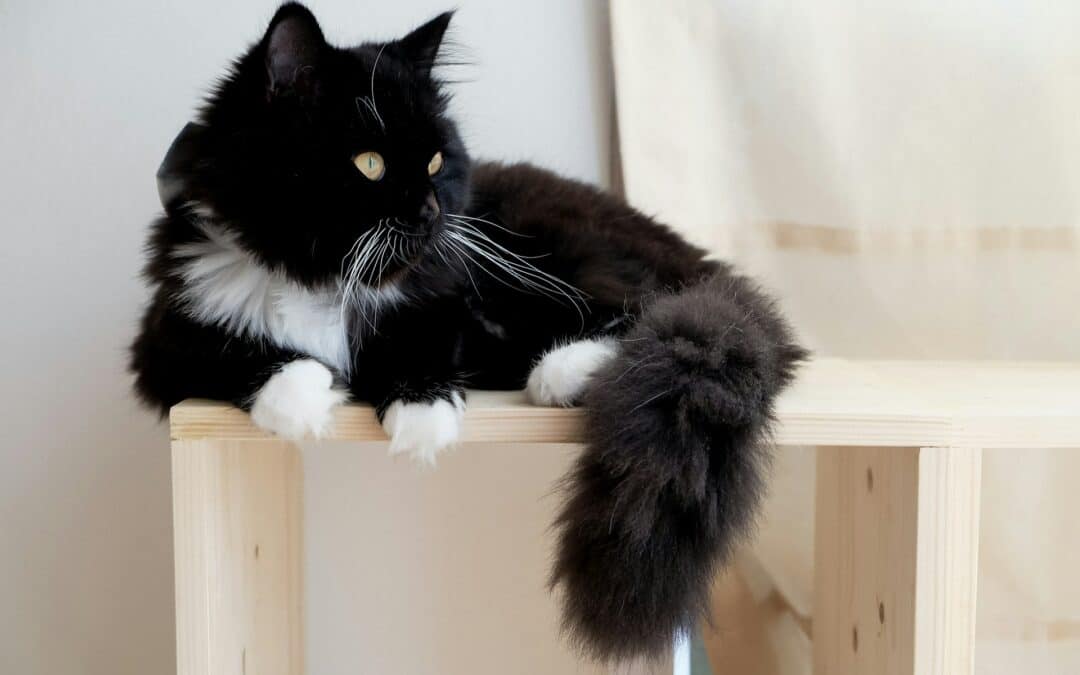Every cat person knows that sound—that hacking, choking cough that means a hairball is imminent. Nobody likes cleaning up cat puke, but hairballs are simply part of living with cats, so you have to put up with them…or do you?
The occasional hairball is perfectly normal. However, they can be dangerous. If your cat is vomiting hairballs more than once a week, or if they are refusing to eat, then you should definitely take them to a vet. We discuss how to prevent hairballs and when you should be concerned about your cat vomiting.
How Do Hairballs Form?
Clinically known as a “trichobezoar” a hairball forms as a byproduct of grooming. Cats can’t digest hair, so what happens to all the hairs they accidentally swallow when they’re grooming? Some of them get passed through the intestines, but the majority of them start to collect in the stomach, forming a clump of tangled hairs that will eventually have to be ejected through the esophagus.
If your cat is suddenly obsessed with chewing on your houseplants, it might be due to a hairball. Cats will instinctively eat plants that trigger vomiting, because they’re trying to get rid of that uncomfortable, indigestible mass in their stomach. Still, you’ll want to do what you can to prevent hairballs from forming. Hairballs aren’t just gross—they can also be dangerous.
The Danger of Hairballs
Trust us on this one: if your cat pukes up a hairball, that’s actually a good thing. When a cat’s body tries to pass a hairball through the intestines, it can become a potentially life-threatening blockage. Surgery is often the only way to remove an intestinal obstruction, and without treatment, your cat could die.
If your cat is refusing to eat, or if they’re hacking but not vomiting, go to the vet as soon as possible. Bowel obstructions can be extremely dangerous. If your vet detects an obstruction in the x-rays, they may administer a series of laxative treatments while keeping your cat under observation. Depending on the severity of the case, surgery may be necessary.
How Do You Prevent Hairballs in Cats?
Even the daintiest cats get hairballs. However, with large cats it’s an even bigger problem. The larger the cat and the longer their hair, the more frequent the hairballs will be. The good news is there are several things you can do to keep your cat from swallowing so much hair.
- Regular brushing: Once or twice a week is fine for most shorthair cats, but long-haired cats can benefit from daily grooming. Make sure you’re using the right kind of brush for your cat’s fur.
- Occasional baths: If they’ll put up with it, giving your cat a bath will help get rid of some of those loose hairs. Just be careful to use a shampoo made for cats, so it doesn’t dry out their skin and cause more shedding.
- Hairball formula cat food: Feeding your cat a special diet is another easy way to prevent hairballs. Ask your vet if they would recommend switching your cat to a hairball control cat food.
When Should I Be Worried About Cat Vomit?
We know it’s gross, but try to make a habit of examining your cat’s vomit before you clean it up. Hairballs are pretty easy to recognize, so if you notice anything unusual, take a photo in case you need to show your vet. They can help you rule out the possibility of an infection, an internal parasite, or a bowel obstruction.
You should always see a veterinarian if:
- There’s blood in your cat’s vomit
- Your cat is vomiting more than once a week
- They aren’t eating or seem lethargic
- Your cat has diarrhea along with vomiting
Dedicated Cat Care in Gilbert, Arizona
Nobody else will give them the same loving attention as Anasazi Animal Clinic. Along with our dedication to providing the highest standards of veterinary care, we also treat every pet who comes through our doors just like they’re one of our own. Whether your cat needs urgent care or you want to get our advice on the best way to prevent hairballs, we’re here for you! Contact us to make an appointment today.
Photo by Suna Onne on Unsplash used with permission under the Creative Commons license for commercial use 9/5/24.

